A Salvaged Banksy Mural is Now on View in NYC
This unique Banksy mural goes up for auction on May 21st in NYC!

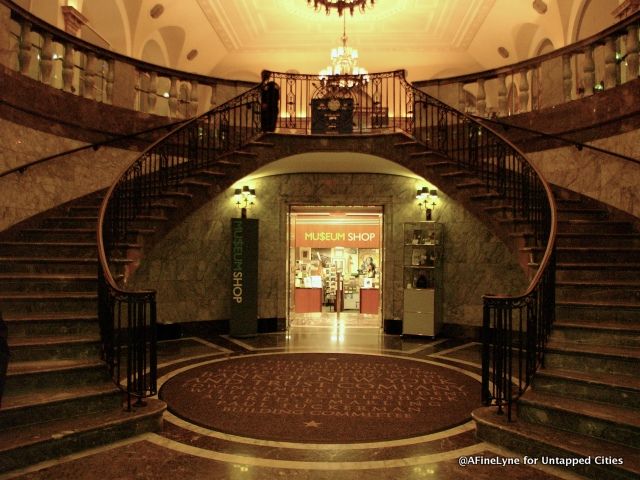
Need some extraordinary holiday shopping ideas? The exhibit “Worth Its Weight: Gold From The Ground Up“ just opened at The Museum of American Finance, showing the ways gold has influenced our everyday lives from the American Gold Rush days to the present, along with its more unexpected uses (like the 18 karat gold Monopoly set, above). Worth Its Weight showcases hundreds of objects from over forty public and private collections.
The exhibit is divided into three sections: history, everyday usage, and gold as objects of beauty, with treasured objects from the Tiffany & Co. archives, along with a display by jewelry designer Marla Aaron. In a connecting room you will find The Midas Touch of Sydney Mobell, well known for his unusual and quirky gold and jeweled luxury items.
The Museum of American Finance opened its doors at 48 Wall Street in the space that was formerly used as the banking hall in the historic Bank of New York building. It was built in 1928 on land used by the bank since 1797.
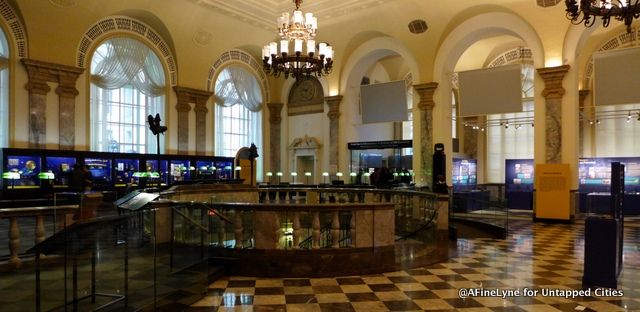
Here are some of the highlights from this new exhibit:
Mining artifacts from the California Gold Rush, including miner’s pan, miner’s candlestick, eating utensils and pepperbox gun are displayed below a detailed timeline:
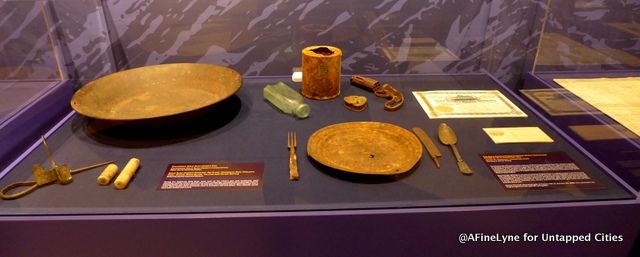
The world’s first gold coin: the King of Lydia gold stater, circa 564-550 BC:

At 662 oz., the Kellogg & Humbert gold ingot is the third largest bar from the SS Central America shipwreck, which was a 280 foot steamer known as the Ship of Gold. The ship sank in a hurricane in 1857, along with more than 420 passengers and 30,000 pounds of gold. It is said that this contributed to the Panic of 1857:

A full set of gold alloy dentures, circa 1800, which is on loan from the National Museum of Dentistry. A rarely displayed collection of “12 Caesar’s” gold coins, which is on loan from Thomas Tesoriero:
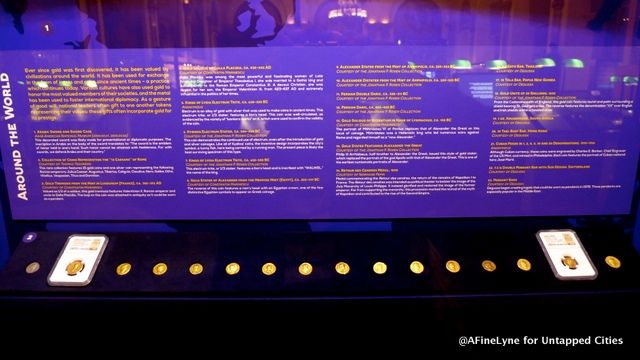
A cabaret service, c.1905-1906 from the Tiffany & Co. Archives crafted of 18 karat gold, citrines, and nephrite jade. This set was owned by William Fox, founder of Fox Film Corporation, which is now Twentieth Century Fox. This is the first time this set has been exhibited in public:
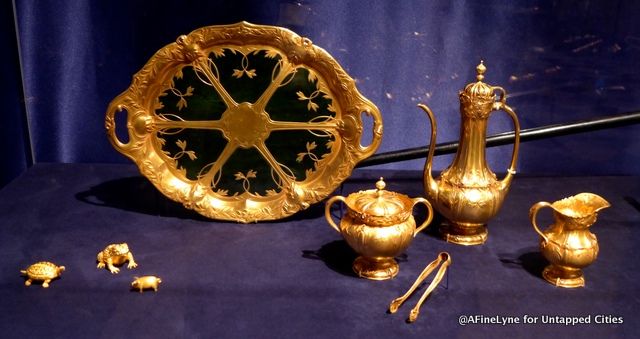
A gold and opal Cigarette Case on loan from the National Museum of Natural History, Smithsonian Institution. The case features the portrait of Tsar Nicholas in the gem stone:
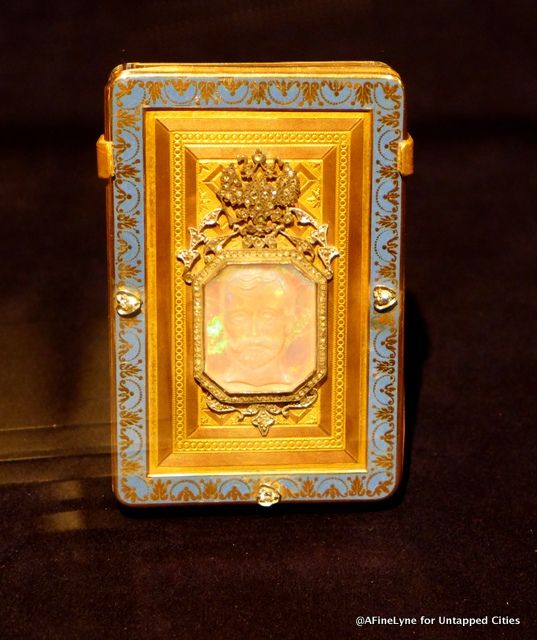
Below is a World War II Victory Charm Bracelet, c. 1944 on loan from the Tiffany & Co. Archives. Due to wartime constraints, the bracelet and charms are made of 14 karat gold, which is a lower karat than typically used for luxury jewelry. On the bracelet you will see the charms of the Statue of Liberty, an airplane, the Victory sign, St. Christopher, and the U.S. Navy anchor:
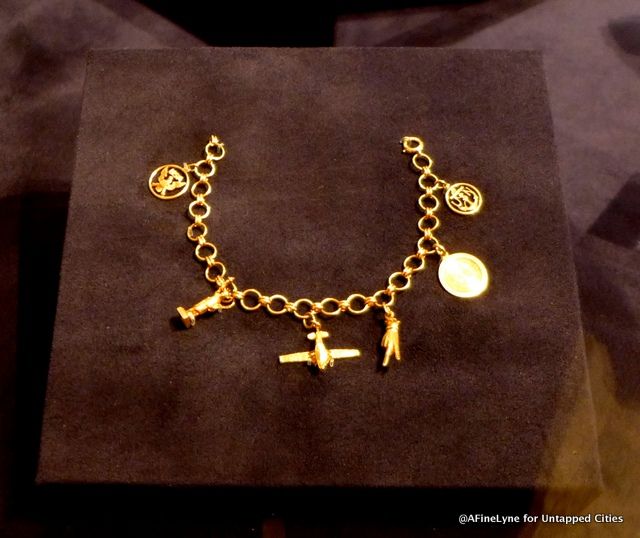
A gold box once owned by Elizabeth Taylor, which is on loan from the Tiffany & Co. Archives:
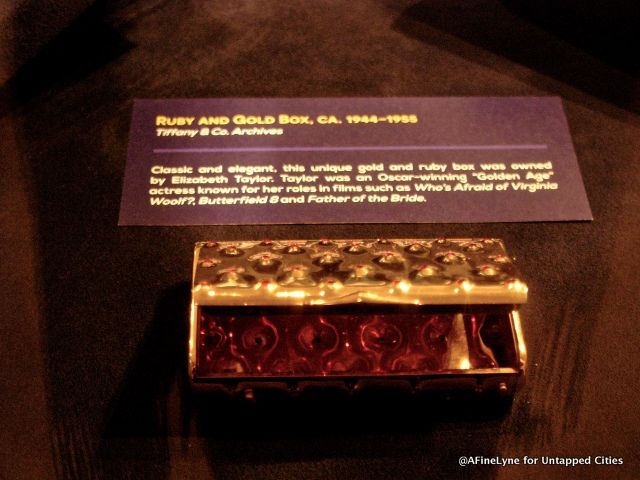
Below, Sidney Mobell stands in front of seventeen of the luxury objects he designed. Mr. Mobell designed hundreds of jeweled objects during his thirty years as a jewelry shop owner in San Francisco’s Fairmont Hotel. In 2002, Mr. Mobell donated nineteen of his jeweled creations to the Smithsonian’s National Museum of Natural History in memory of his late wife, Ronni.
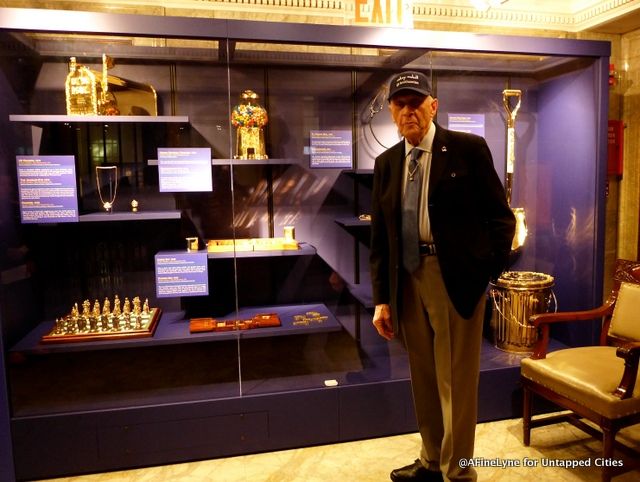
Some of the objects on display by Mobell are a 10 gallon garbage can made of 24 karat gold and set with 457 precious and semi-precious stones, including 208 rubies, 164 sapphires, 18 emeralds and seven diamonds; an 18 karat solid gold pacifier with 8 round-cut diamonds; a mailbox plated with 24 karat gold and studded with 137 sapphires, 100 rubies, 25 diamonds and 10 emeralds and a gold and jewel encrusted shovel with three historic coins, just to name a few – all on loan from the National Museum of Natural History, Smithsonian Institution.
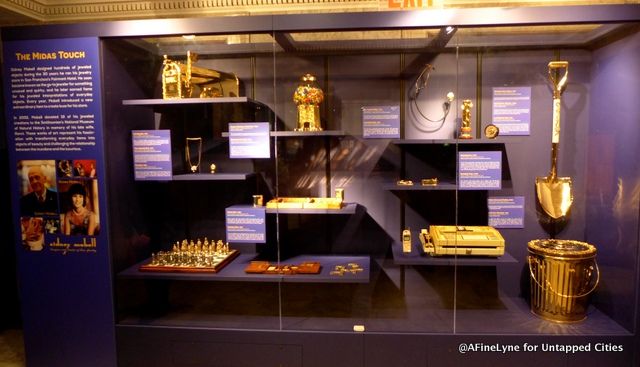
A 14 karat gold Nokia cell phone encrusted with 39 diamonds, 21 rubies and 212 sapphires by Sidney Mobell:
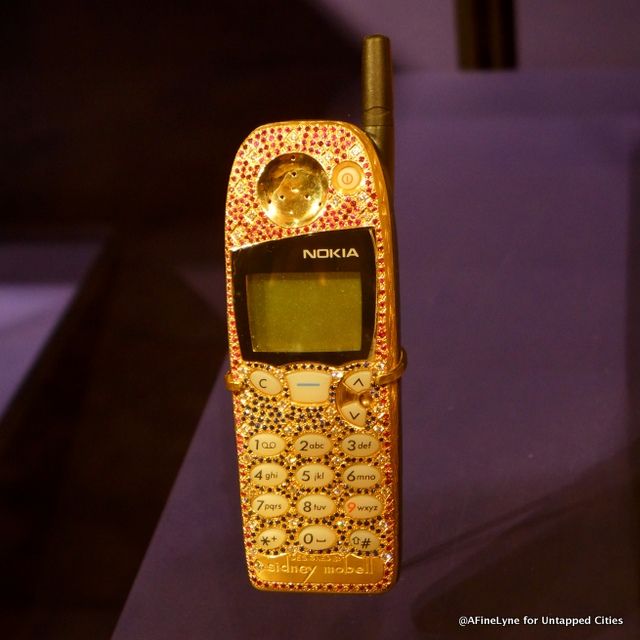
A 14 karat sold gold mousetrap with diamond cheese wedge by Sidney Mobell:
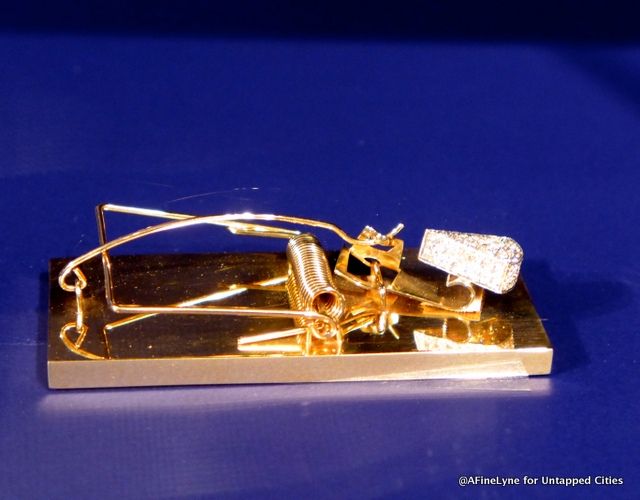
Gold and jewel encrusted gumball machine by Sidney Mobell:
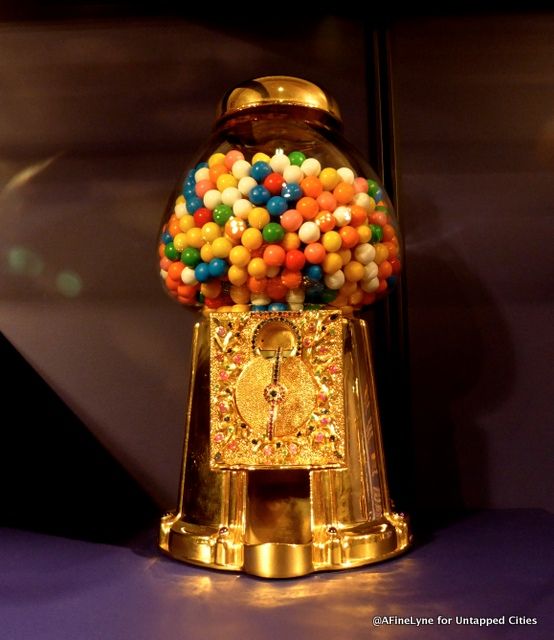
Last but not least, a gold and jewel encrusted toilet seat, which is on display next to the Museum restrooms:
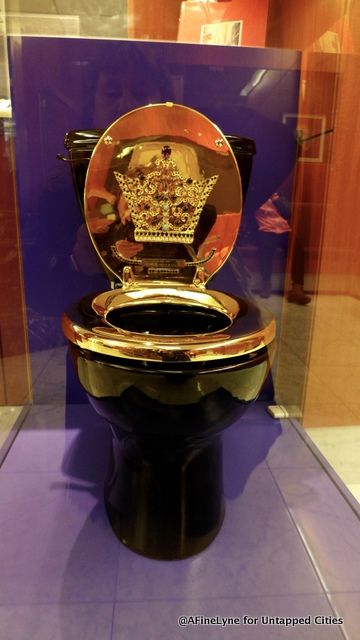
“Worth Its Weight: Gold From the Ground Up” is sponsored by Apple co-founder Steve Wozniak and Sidney Mobell, with additional support from the International Precious Metals Institute (IPMI), Van Eck Gold Funds, and Loomis. The Museum of American Finance is an affiliate of the Smithsonian Institution. Inspired by the Stock Market Crash of 1987, it is our nation’s only independent public museum dedicated to preserving, exhibiting and teaching about the history of American finance. The exhibit will be on view through December 2016, located at 48 Wall Street.
Next, check out the Gold ATM on 57th Street and learn more about Wall Street here. Get in touch with the author at AFineLyne.
Subscribe to our newsletter